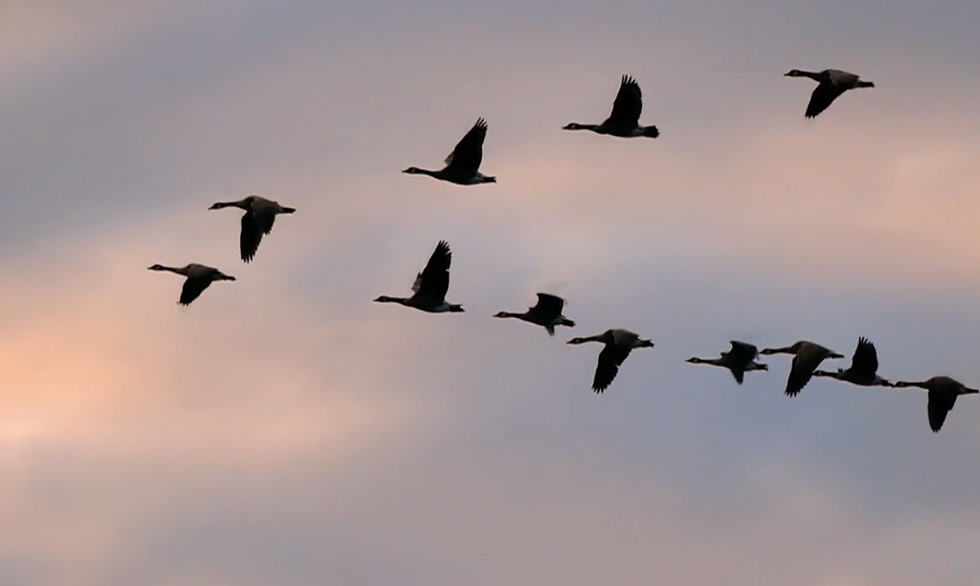Week 3-Bird Brain
- Giselle Gin
- Apr 21, 2024
- 2 min read

From solving puzzle pieces to helping each other in the air, birds are far more advanced than we think! The documentary, “Bird Brain”, explores all the strategies and behaviors that are seen among bird species. While watching this film, the researchers who stood out to me were Christina Riehl and John Marzluff. Christina Riehl’s research primarily focuses on the evolution of social behavior and cooperative breeding in birds. John Marzluff on the other hand, studies how humans affect birds through habitat fragmentation and urbanization.
While watching the documentary “Bird Brain”, I learned so much about birds that I never knew beforehand. Specifically, I learned that “Geese, despite their small brains understand hierarchies” (34:40). I chose this quote because it emphasizes how although birds have small brains, they can understand complex things such as hierarchies. This also brings awareness of just how intelligent geese are despite their size. Something that also stood out to me was how “Some birds have the same abilities humans do” (38:50). I chose this quote because it highlights the advanced abilities birds have similar to humans. It also acknowledges the diversity across species of birds as some are more cognitively advanced than others.
It was also fascinating to learn about some of the characteristics of their behavior and how they care for one another. For instance, it was mentioned in the documentary how one of the birds who was being raised had lost their partner. As a result of this, the bird sadly started pulling out its feathers (16:25). This particular case reminds me of the article from TIME about animals mourning. Specifically, the article mentioned how “Animals are not insensate- less sensate than us, certainly, but able to bond and romp and case and suffer in their own particular ways” (Kluger). This emphasizes the fact that animals are capable of caring for one another and suffer in different ways when accidents happen. As for the documentary, it was shown that the bird was experiencing behaviors of grief.
I was also fascinated to learn more about geese. While the documentary mentioned how many people doubt their capabilities because of their smaller brains, it highlighted how intelligent they are as well as how they communicate with each other. One case that stood out to me was how geese fly in a formation in the air to help each other get an extra lift of air (35:00). I never knew this was why they fly in a formation and was amazed that this is a technique they use to help support each other. This reminded me of the TIME article about animals communicating with each other. Specifically how, “Animals communicate in ways that are suited to their worlds, that keep them fed and safe and alive long enough to reproduce and rear their young” (Kluger). As shown in the documentary, the geese would continue to communicate with each other by switching formations when they were flying to help each other.
Ultimately, the documentary film, “Bird Brain”, highlighted the importance of understanding birds and just how intelligent they are. While they may have small brains, they are capable of doing so many things such as quickly adapting to new environments, helping each other, and solving complex puzzles.



I also found the behavioral effect of grieving very interesting. After watching the documentary, I did quick google search on why birds pluck out their own feathers and a lot of the information that popped up mentioned owner or mate loss as a major stress and anxiety inducing occurrence.
I find it really cool how you mentioned and describe how the bird was processing grief in that moment and how they display their own kinds of stress. — really interesting stuff!